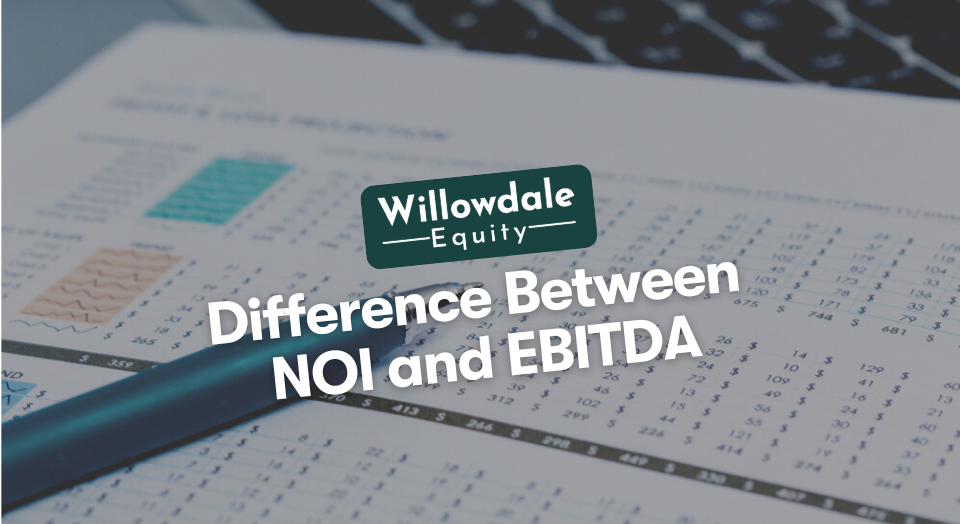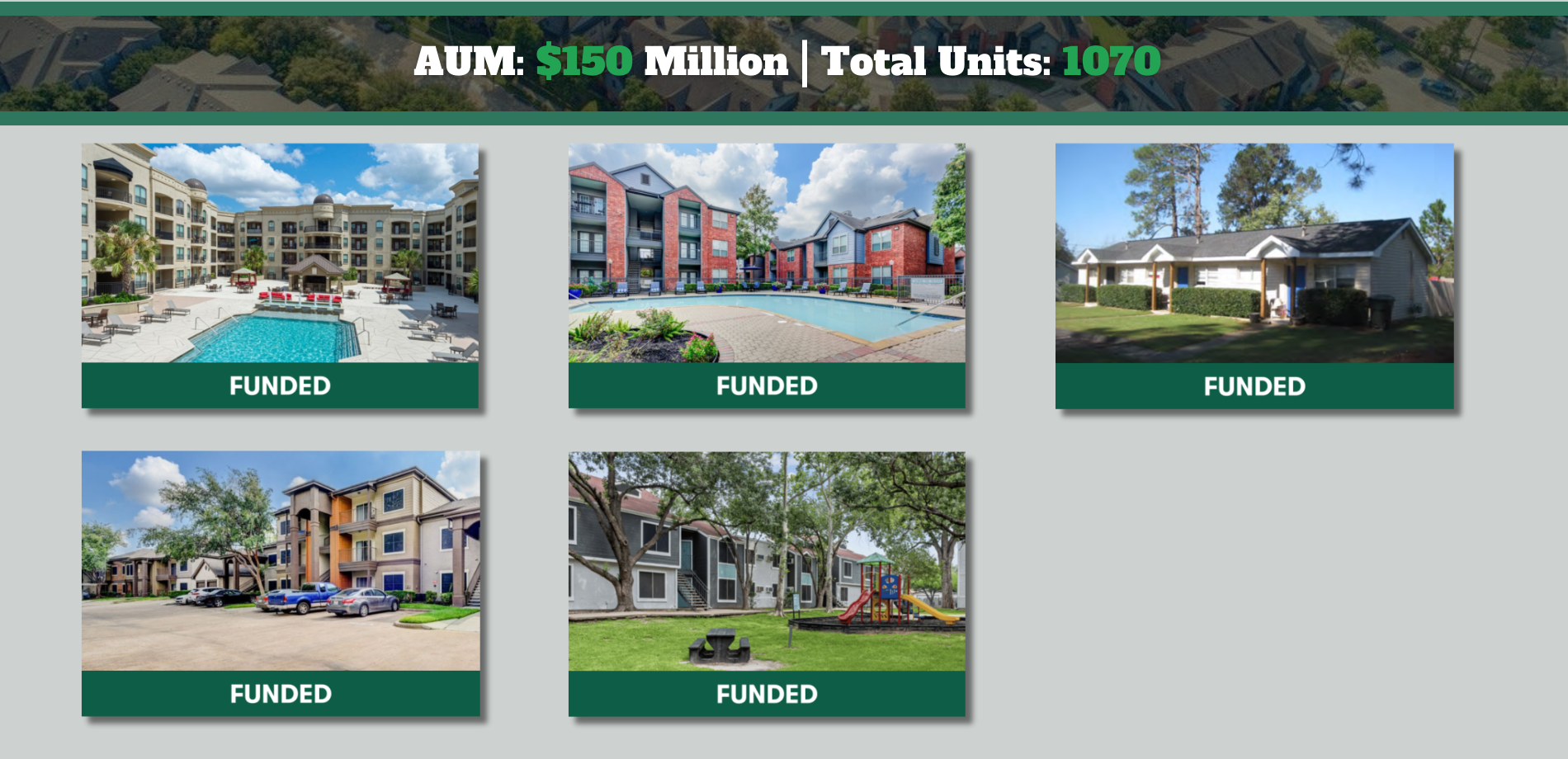
What is the Difference Between NOI and EBITDA?
This article is part of our guide on what a good cap rate is for multifamily, available here.
EBITDA and NOI are critical financial indicators that all prospective real estate investors should know. Both metrics are frequently used to gauge profitability. However, there are significant differences between them.
So, what is the difference between NOI and EBITDA? While EBITDA is frequently used to measure a firm’s profit-making potential, NOI is used in real estate to assess the net income-producing potential of a given property.
This article provides a refresher on NOI and EBITDA, explains the main differences between them, and identifies the types of businesses using NOI or EBITDA as a metric.
Key Takeaways
-
NOI calculates a property’s net income before debt service by deducting gross operating expenses from the gross income of a property.
-
EBITDA is another metric for profitability, but it concentrates on business profits rather than gains from real estate holdings. EBITDA includes the administrative expenses, cost of goods sold, and other operational costs when calculating a company’s annual income.
-
The main difference between net operating income (NOI) and EBITDA is the application of interest and taxes.
Brief Refresher on NOI
Net operating income (NOI) is an indicator of the profitability of income-producing real estate. NOI calculates a property’s net income before debt service by deducting gross operating expenses from the gross income of a property. Any business that makes money from a property can use NOI to measure profitability. However, it is most commonly used to access cash-flowing real estate assets like multifamily.
A property’s gross revenue under NOI is the sum of all its earnings, less any expenses incurred to operate the property functionally. An item is generally seen as an operating expense if its non-payment will endanger the asset’s potential to continue generating income.
Property taxes, payment to vendors, contractor and supplier fees, repairs and maintenance, insurance, utilities, licenses, materials, and overheads, such as those incurred for bookkeeping, legal counsel, and advertising, are examples of operating expenses.
Amortization and depreciation (the total write-off of long-term assets), CAPEX (Capital Improvements), principal, and loan interest payments, are not included in NOI because they have no bearing on a business’s or real estate investment’s ability to turn an operating profit.
NOI measures the power of a property to turn a profit from its operations.
The formula for calculating NOI is:
NOI = Gross Operating Income – Operating Expenses
Now that we’re refreshed on NOI, it is time to get a picture of what EBITDA entails.
Brief Refresher on EBITDA
EBITDA is another metric for profitability, but it concentrates on business profits rather than gains from real estate holdings.
EBITDA includes the administrative expenses, cost of goods sold, and other operational costs when calculating a company’s annual income. The costs of amortization and depreciation, debt interest, and income taxes on sales are not deducted because they aren’t directly tied to the company’s operations. The rationale is that management cannot operationally control these costs.
Many experts feel that by adding these numbers back to net income (calculated as gross business income less all operational expenses), EBITDA can be a more accurate indicator of company success. It’s because EBITDA indicates earnings before the impact of accounting and finance deductions.
The formula for calculating EBITDA is:
EBITDA = Net Income + Interest + Taxes + Depreciation + Amortization
EBITDA can also be calculated by deducting depreciation and amortization from the income before interest and taxes (EBIT) amount. Another commonly used financial metric, EBIT, adds interest and tax costs back to net income.
The formula for EBITDA here is:
EBITDA = EBIT + Depreciation + Amortization
EBITDA differs from EBIT because the calculation demonstrates that it adds back sums for depreciation and amortization. Similar to how operating income is different from EBITDA, net income is increased by some expenses in EBITDA.
Despite apparent differences in how each measure is calculated, people often mistake EBITDA for NOI and vice versa. So, is EBITDA the same as NOI? We look to end that confusion here.
Is EBITDA The Same As NOI?
Even though NOI and EBITDA are two widely used profitability metrics that don’t account for some non-operating costs, they are not the same. There are some significant distinctions between the two.
The main difference is in how each metric is used. Due to NOI’s property-specific character, it is typically used to gauge a commercial or residential property’s profitability. EBITDA, on the other hand, is used to measure a company’s overall profitability.
There are some other key differences between NOI and EBITDA, and we will look at them next.
What is the Difference between NOI and EBITDA?

- The main difference between net operating income (NOI) and EBITDA is the application of interest and taxes. EBITDA measures a company’s profit before subtracting expenditures, taxes, depreciation, and amortization. The NOI metric, on the other hand, measures a company’s profit after all operational expenses have been covered. Interest and taxes are excluded.
- Because companies of different sizes may use it, EBITDA is commonly employed. Businesses can be compared and evaluated using EBITDA as well. On the other hand, NOI is revenue that comes from business activities. The primary distinction between operating and net income is the revenue derived from outside sources.
- EBIT is multiplied by depreciation and amortization to get EBITDA. Another way to calculate it is to add net profit to interest, taxes, depreciation, and amortization. NOI, on the other hand, is calculated by subtracting operating expenses from gross income.
Another difference between Net operating income and EBITDA is that businesses use each as a metric. The types of companies that use NOI and EBITDA are identified below.
What Types of Businesses use NOI as a Metric?
Typically, NOI is used to assess the profitability of a real estate investment. Therefore, NOI is most commonly used by businesses that want to calculate a rental property’s profitability potential. These include investment firms looking at residential rental properties or commercial properties like multifamily apartment communities.
What Types of Businesses use EBITDA as a Metric?
EBITDA is a metric used to assess a company’s profitability. For example, if you own a hotel, you can calculate EBITDA to evaluate the profitability of your hoteling business. EBITDA can also be used to provide an overview of your business’s financial performance to investors. Many startups use EBITDA to show investors how they are performing financially.
We have covered all bases regarding the difference between NOI and EBITDA. However, a few frequently asked questions (FAQs) regarding their differences need to be answered. That is what we will be doing next.
Frequently Asked Questions About the Similarities between EBITDA And NOI
Sales, general & administrative (SG&A), as well as depreciation and amortization, are included in NOI. On the other hand, the bottom line, often known as net income, may also include revenue from the sale of property or interest income.
While EBITDA is used to assess a company’s financial performance, NOI is primarily used to assess an investment’s profitability in a piece of residential or commercial real estate. While EBITDA will not factor in the lost income from vacancies, NOI does.
Difference between NOI and EBITDA - Conclusion
The operating profitability indicators NOI and EBITDA are widely used in business. Still, NOI is geared toward real estate holdings and has more add-backs to separate the actual free cash flow produced by the asset.
Join the Investors Club today to learn more about how NOI can be used to determine the financial viability of property investment to ensure your investment success.
Sources:
- Investopedia, “NOI vs. EBIT: What’s the Difference?”
- SmartAsset, “Operating Income vs. EBITDA: What’s the Difference?”
The Willowdale Equity Investment Club is a private group of investors that are looking to passively grow their capital and share in all the tax benefits through multifamily real estate investments.






